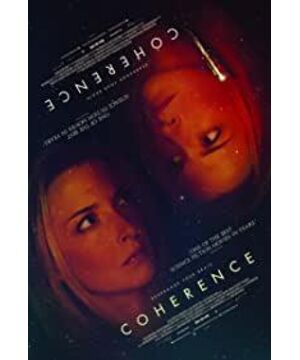How should science fiction movies be made to look good? "Star Wars", "The Matrix", "Avatar" and "Inception" all gave one answer, while "This Man From Earth" and "Moon" gave another answer, "The Butterfly Effect" ” and “Source Code” also gave one answer, and the three answers were divided by the investment amount of the movie. There is also a distribution called hard science fiction and soft science fiction. Hard sci-fi is based on the fantasy of technological progress, while soft sci-fi takes sci-fi as the background and develops the description of social, humanistic and ethical issues. Reflected in movies, hard sci-fi often requires large investment, and needs to use big scenes as a visual impact to create a magnificent and bizarre world; while soft sci-fi can be shot at a small cost because the topics discussed are relatively abstract. Therefore, some rookie directors often start from soft sci-fi and shoot relatively good-looking movies with a small investment. Of course, the boundary between soft sci-fi and hard sci-fi is also breaking. For example, "The Matrix" and "Inception" have both hard sci-fi elements and soft sci-fi connotations. I only talk about pure soft sci-fi here, and a very good-looking sci-fi movie was made at a very small price. I used to think that there was only "This Man From Earth", but now there is another one, and that is "The Night When the Comet Came". It takes a few people to sit down and chat, or walk around the yard to finish the whole story, and suspense and horror are everywhere, and they are full of scientific imagination, which is really amazing. Regarding "The Night the Comet Came", this film was filmed in 2013 and finally became popular in 2014 with word of mouth. As a sci-fi movie, the whole storyline is formed by a few people chatting in a room, then strolling outside the house and then coming back to continue chatting. This kind of movie looks extremely boring to some people, while others I think it's a masterpiece. As a sci-fi film mainly based on simple chat, its superb creativity greatly enhances the splendor of the film. If you have studied quantum mechanics and have a good understanding of "Schrödinger's Cat", you will feel that "The Night of the Comet" is actually not that magical. Since scientific principles are used, it is necessary to understand quantum mechanics and two small principles before explaining this film. The so-called quantum mechanics is a physical science that describes the structure, movement and change of the microscopic world. We all learned about particles when we were middle school students. Among them, we have had some contact with the concepts of atoms, electrons, protons, neutrons, and quarks. In addition, we have also eliminated concepts such as magnetic fields and microwaves. We also mostly know that light is "wave-particle duality". But in the real microscopic physical world, the microscopic laws revealed by quantum It is very different from the macroscopic laws seen in daily life. Because of the existence of energy, spin, motion, field, etc., the state of microscopic particles in the so-called "superposition state" is uncertain. For example, an electron can be located in several different places almost at the same time. Simply put, an electron forms a cloud . It seems absurd that a physical form randomly appears in any orientation at a certain time. For example, at the same time, a person may be in New York and the Himalayas at the same time, one he is skydiving from the top of a skyscraper, and the other he is climbing to the top of a snowy mountain. This is absurd, but the microscopic world seems to be like this. It is like pulling away and looking at the above-mentioned buddy from the perspective of the universe. He is still just a small lump on the earth moving blindly, and appears in different places at the same time. The location constitutes a kind of "superposition". However, the physicist Schrödinger was deeply absurd by the state of the microscopic world, so he introduced the microscopic world into the macroscopic world, and compiled a physical experimental device in 1935. He assumed an opaque cage with a cat inside, along with a bottle of poison gas and a hammer. At the other end of the hammer, the link is a series of contraptions containing a radioactive atomic nucleus. Imagine that this radioactive nucleus has a 50% chance of decaying within an hour. If it decays, it will emit a particle that will trigger the hammer, which in turn will break the gas bottle, killing the cat. During this hour, to the person sitting outside the cage, you have no idea whether the cat in the cage is alive or dead. But because of the explanation of the "superposition state" of quantum mechanics, during this hour, that atomic nucleus is very likely to be in a decayed state, or it may be in a non-decayed state at the same time, and the two states are superimposed and exist at the same time. That is to say, the superposition of the nuclei caused Schrödinger's cat to be both dead and alive during that hour, with both states existing at the same time. Do you find it ridiculous? It's true that a cat is alive and dead at the same time. In the real world, can a cat exist both alive and dead at the same time? This paradox is what Schrödinger wanted to prove. He wanted to prove the incompleteness of quantum mechanics under macroscopic conditions. Of course, it's not over yet. Because the cat is dead or alive, just open the cage and take a look. Because the common sense of the macro world tells us that a cat can only exist in one state in an hour, either dead or alive, and this result can be known just by opening the cage and taking a look. But for the microscopic world, whether the cat is still alive or dead, it becomes a given state, that is, At the moment when the cage was opened, the cat was in a cloud state of being both dead and alive, and instantly collapsed into a state. Note that it is human observation that determines the cat's life and death. The moment the cage is opened, the cat's fate is already doomed. In this process, if the mathematical model area is used, the state of the cat can be represented by a very complex wave function before the cage is opened. The form becomes extremely simple in an instant. In other words, human observations change the state of reality, which in turn triggers a phenomenon called "quantum dispersal." This means that when the observer observes the microscopic world, the observation itself will have a corresponding impact on the shape of the microscopic world, and the observation itself will cause the dispersion of quantum. The above-mentioned "Schrödinger's cat" is in two states of being dead and alive at the same time, the root cause is whether the nucleus is in two states of decay and non-decay at the same time. In order to confirm that the two states exist at the same time, many scientists have made experiments. In May 1996, Monroe et al. of the National Institute of Standards and Technology (NIST) in Boulder, Colorado, USA made a "Schrödinger's cat" with a single beryllium ion and took a snapshot, and found that the beryllium ion was in the first space. The position is in a positive spin state, and at the same time it is in a negative spin state in a second spatial position, and the two states are 80 nanometers away! (1 nanometer is one billionth of a meter) - that's a huge distance on the atomic scale. Imagine this beryllium ion is a psychic master who is in New York at the same time as the Himalayas, one he is skydiving from the top of a skyscraper, the other he is climbing to the top of a snowy mountain! In December 2005, Leibfried et al. of the National Institute of Standards and Technology of the United States reported in the journal Nature that they had achieved the "Schrödinger's cat" state with more particles and the longest duration. In the experiment, the researchers "fixed" beryllium ions in an electromagnetic field trap every few micrometers, then used a laser to cool the beryllium ions to near absolute zero and manipulate the motion of the ions in three steps. In order to make as many particles as possible achieve the "Schrödinger's cat" state for as long as possible, the researchers improved the cooling efficiency of the laser on the one hand, and made the electromagnetic field trap absorb as much heat as possible from the ion vibrations. Finally, they made six beryllium ions spin clockwise and counterclockwise at the same time within 50 microseconds, realizing the isometric superposition entanglement of two opposite quantum states, or "Schrödinger's cat" state. Among the many explanations for "Schrödinger's cat", the Englishman John R. Gribbin points out that both cats may be real. He believes that there is a live cat and a dead cat, both in different worlds. The question isn't whether the radioactive nucleus in the box decays, but that it both decays and doesn't. When we look into the box, the whole world splits into two versions of itself. The two versions are identical in all other respects. The only difference is that in one version, the atom decays and the cat is dead; in the other version, the atom does not decay and the cat is alive. This time, the world was split into a parallel world. Two worlds exist at the same time, the cat is both dead and alive at the same time, but we can only see one state of it from one world. Gribbin's explanation, which formed the view of many worlds and a balanced universe, was not accepted by many people because it was too bizarre. But for the creation of literature and art, it just provides the wings of imagination. As a result, a large number of works about balancing the universe were created, and there were even good-looking films such as "Source Code" and "X-Men: Days of Future Past". Going back to "The Night the Comet Came", the writers and directors seem to have used "Schrödinger's cat" and "Theory of Decoupling" strictly and made up corresponding stories. First, there was a house, then there were four men and four women inside, and then a comet floated in the sky outside. Affected by the comet, the house suddenly lost power, so the people in the house sent a few people out to observe and then returned to the house. But unfortunately, when the people who went out came back, they found that a subtle change had taken place between several people, and it seemed that something had changed outside. When I went out to observe again and came back again, this change became more and more. In this regard, the suspicion has become larger and larger, which has led to a bloody case. In fact, this story is explained in terms of "Schrödinger's cat". The comet in the sky is like the nucleus in a state of semi-decay, the crowd in the house is the cat, and the moment they open the door after the power outage is quite the cat The moment the cage was opened. Under the influence of the comet, no one knows what happened to the relationship between the people in the room before the power outage. It may be that there is an affair, but there is no cheating. What is going on between these "Schrödinger's cats", no one knows. However, the film uses these people as both cats and observers. Then according to Gribbin's theory, every time you open the door and go out, the whole world splits into a different world. Once the door is opened, it will be split once, and there are 8 people in the room, and one split can form multiple parallel worlds according to different pairings. Originally, these different worlds could not interfere with each other, and one of them could not enter the other world. But the film sets them up as both "cats" and "observers," and the two characters merge into one, and the different worlds find their intersection. So the red glow sticks and the blue glow sticks appeared together, and the same person could travel between different worlds. Finally, a woman sees the relationship of this parallel world. So, she tried to travel through different worlds, trying to find the one that was most suitable for her, and then stopped and lived in it. Finally, she found one, killed the same woman as her in this world, and wanted to live as the dead one. Everything seemed seamless, but at the end the phone of the man in front of him rang, and then his eyes looked at her with doubts in his eyes... The simultaneous existence of parallel worlds, and crossing each other, makes this movie It looks messy and full of bad fun. And it has formed the most direct deduction of "Schrödinger's cat", plus the explanation of the logic system, which is particularly interesting. It can be used as a teaching film for college classrooms, and it can be used directly without any sense of disobedience. And it is amazing to interpret a scientific theory so superbly. Call it a masterpiece, no problem at all. The co-existence of parallel worlds, as well as crossing each other, makes the film seem cluttered and full of bad taste. And it has formed the most direct deduction of "Schrödinger's cat", plus the explanation of the logic system, which is particularly interesting. It can be used as a teaching film for college classrooms, and it can be used directly without any sense of disobedience. And it is amazing to interpret a scientific theory so superbly. Call it a masterpiece, no problem at all. The co-existence of parallel worlds, as well as crossing each other, makes the film seem cluttered and full of bad taste. And it has formed the most direct deduction of "Schrödinger's cat", plus the explanation of the logic system, which is particularly interesting. It can be used as a teaching film for college classrooms, and it can be used directly without any sense of disobedience. And it is amazing to interpret a scientific theory so superbly. Call it a masterpiece, no problem at all.
View more about Coherence reviews











